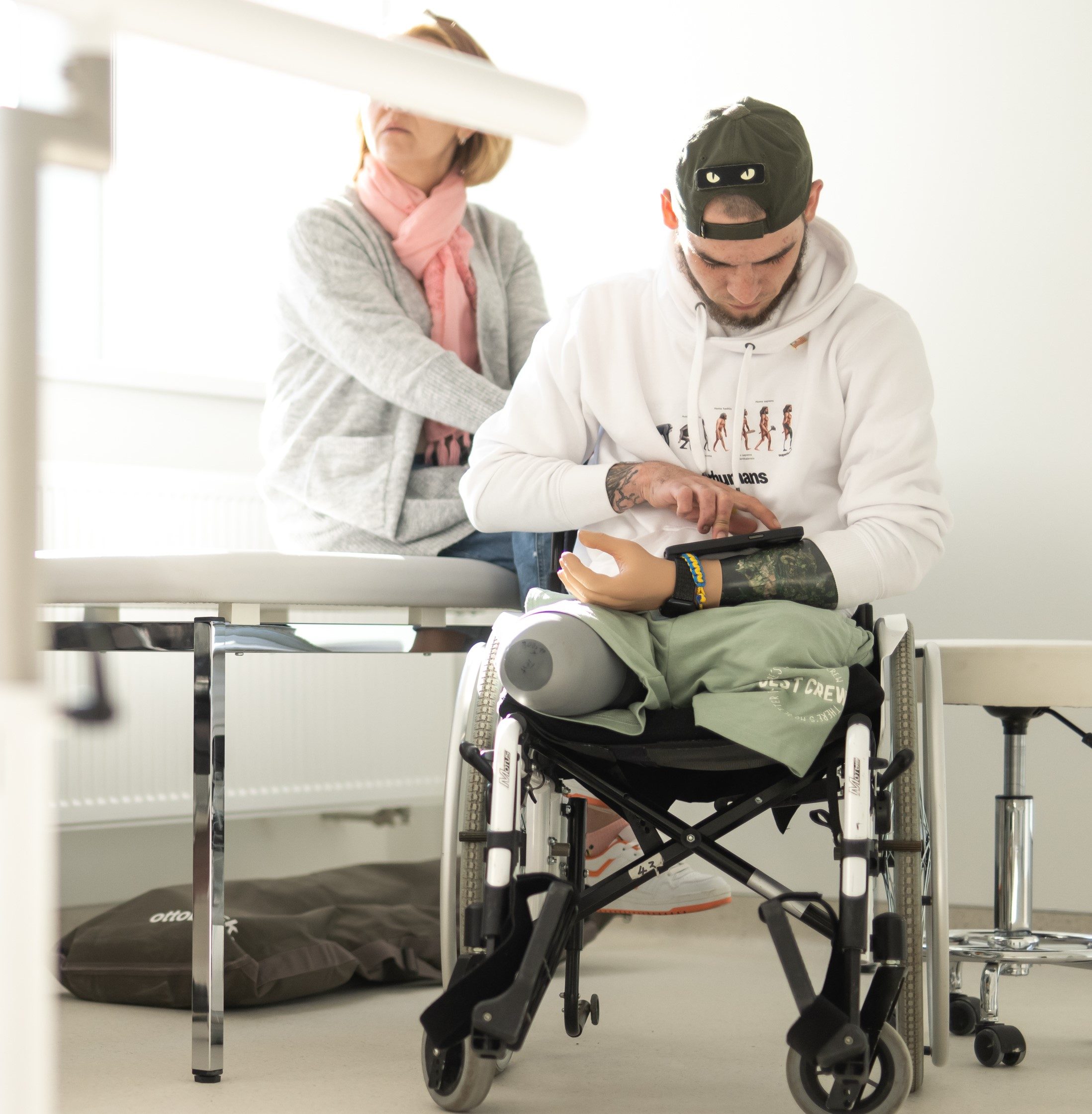Eight ways to make Health on the High Street happen
Shopping centres are becoming the community health hubs of the 2020s, with more services being provided outside of hospitals with spin-off benefits for town centre regeneration and NHS carbon footprint reduction. But how do you make it happen? Fortis spoke to leading innovators in this space, Michael Wood, Head of Health Economic Partnerships at NHS Confederation; and Jaime Bishop, founder of Fleet Architects, Architectural Lead at Health Spaces and board member of Architects for Health, and asked them for their tips
Travelling miles outside towns on infrequent buses or by car in congested traffic to queue for oversubscribed parking spaces is increasingly becoming the old model for providing healthcare. The Health on the High Street model – where town centre buildings, such as empty retail units and leisure centres, or even former industrial buildings are repurposed at convenient locations close to public transport links and/or a walkable distance from homes – is becoming increasingly popular.
Schemes such as the NHS Community Diagnostic Centre (CDC) in The Glass Works shopping centre in Barnsley are delivering ultrasound, x-ray, breast screening, phlebotomy and bone density scans at a central, convenient location.1 In Oldham, Lancashire, a £10 million CDC has opened as part of the ambitious ‘Creating A Better Place’ programme of regeneration, with 2,000 new homes for a range of budget needs, which could deliver 1,000 new jobs and 100 apprenticeships.2
In the London Borough of Haringey, the Whittington NHS Trust has opened a CDC in the Mall Shopping Centre in Wood Green, in the centre of the Borough, which is easy to get to for most people.3 NHS Dorset has also opened outpatient assessment centres in Poole and Dorchester town centre sites with good transport links.4
Michael Wood, Head of Health Economic Partnerships at the NHS Confederation, says: “There are a range of clinical, community, diagnostic and mental health and wellbeing services which can be provided in high street settings. Critically, not only can they be provided on the high street, the effectiveness of and engagement with these services may well be improved by being situated there. What they will also certainly do is improve the high street’s local ‘offer’, ensuring a more sustainable, viable and prosperous community.”
Here are eight insider tips to consider when drawing up a Health on the High Street local plan.
- Let one organisation take the lead
“When various stakeholders such as local councils, acute hospitals, community services, GPs and public health collaborate on a Health on the High Street project, you get an inherent complexity and the risk is you take some of the clients with you and not others,” explains Jaime Bishop, founder of Fleet Architects, Architectural Lead at Health Spaces and board member of Architects for Health. “You need critical mass to make a project work, but if one group feels disenfranchised or doesn’t feel their needs have been listened to, they could destabilise the whole process.
“You need collaboration, and everyone to go into it with an open mind, but you probably also need one of the public sector organisations to take the lead to shoulder the burden.
“Councils bring an interesting perspective in that they are less concerned about how the nuts and bolts are put together and more focused on the outcomes. They take a more strategic view, particularly around place, and that can free up the acute Trust, for instance, to deliver the service.”
- Consider the transport needs of patients and staff – and think beyond car drivers
“There’s not a health building I’ve worked on where people don’t ask about car parking – it’s one of the most visible things when you have a hospital building. But far fewer people access a hospital by car. The reality is lots of people use public transport, but they are unseen,” says Jaime.
“The poorest and those most in need staff and patients will use public transport. I highlight this by gathering photographic evidence showing queues of older people with walking sticks at bus stops or hospitals – they are just not being considered.
“Delivering Health on the High Street is hugely beneficial to these groups – they can access healthcare when they are going out to the shops to pick up some groceries, so healthcare becomes part of their normal day. For a single parent working three jobs, a clinic walking distance from work means she won’t need to take a day off to get to a hospital appointment.
“I’m not saying car parking isn’t an issue, but it is discussed to the detriment of other aspects and of those most in need. Everybody stands to benefit from more Health on the High Street locations because you can also improve public transport and increase walkability. For instance, one scheme under consideration in the Medway town of Chatham would more than double the number of people who could access healthcare by foot within 15 minutes from 3,000 to 7,000.”
- There are opportunities as we look for solutions to financial hardship
Local councils are facing real financial hardship and openly discussing vacancy rates in retail, says Michael: “There’s interest in new partnerships with the public sector from many property owners and investors, while patients are more open to pop-up services than previously, and local businesses are desperate for the increased footfall that Health on the High Street projects have the potential to bring.
“There are also new funding sources and research programmes dedicated to place, and the issue of civic pride is rising the agenda again, all of which should challenge and excite us in different ways.”
- Mixed-use property development is the way forward
“Several NHS organisations have taken over floors in department stores, CDCs have moved into shopping centres, we are co-locating services in leisure centres, one Trust moved into a Carnegie library – a hugely symbolic local building – which was due to shut,” explains Michael. “Many don’t want their centre to be an NHS-only building too – the value is on a multi-purpose community hub in which health and wellbeing is only a part. This points to a broader and positive change in the desired relationship between the NHS and communities.”
- Learn from the pandemic – it changed everything
“The national vaccination programme has shown the NHS that we can provide services in different ways and in different places. It has shown the business community that having health services locally can benefit everyone due to an increase in footfall and ways to reach customers. The public have learned that they do not need to go to a traditional health setting to be seen,” says Michael.
“Covid-19’s impact on our wellbeing can also evolve a renewed look at how the arts and culture sector stimulates community activism and entrepreneurship. The value people have associated with their health during the pandemic could lead to new investment opportunities for innovative companies,” he adds.
- Use ‘triage’ assessment techniques to assess suitability of buildings
“There’s a need to be able to quickly assess if a building is suitable for conversion for health or NHS use – and because of the sheer numbers and different styles of properties available, we don’t have the capacity to evaluate every single one,” explains Jaime.
“To use healthcare language, we need to be able to rapidly ‘triage’ a building to assess its capacity, and we have developed a system for that, where we can assess detail like floor to ceiling heights, the suitability of the structure and the availability of drainage, but also how it might deliver on the more strategic outcomes, such as if the location is good for the population it is going to serve.
“We also map indices of deprivation because we know poverty and health run in parallel and healthcare should be delivered to the areas with the highest need.
“So, we have this checklist where we can assess suitability quickly and identify the best opportunities.”
- Don’t get too bogged down with technical detail too early on
“I don’t want to underplay how important the technical detail is,” says Jaime. “But with the right team asking the right questions early on, you can prevent paralysis by analysis, and stop technical issues becoming a barrier. It doesn’t mean you don’t need all those skills and that there is not going to be difficult things to do, it just means you’re not stymied early on. If people are taking a risk on a new idea and it’s always coming up against obstacles, it saps energy and takes momentum out of a project, and that can lead to failure.”
- Find the ‘anchors’ in towns and city centres – and build healthcare there
“There are so many high-quality empty town centre buildings, many of them former department stores or similar – ‘anchor’ businesses that brought people into towns that could be repurposed for healthcare,” points out Jaime. “The healthcare building can become the anchor institution in many town centres, bringing back footfall and creating more jobs, as well as being easier to access for the people who need it most.”
FOOTNOTES
1 [https://www.barnsleyhospital.nhs.uk/about-us/our-locations/community-diagnostic-centre]
2 [https://www.oldham.gov.uk/news/article/2424/landmark_health_centre_opens_in_royton]
4 [https://www.nhsconfed.org/events/realising-health-high-street]
© Dialogue Content Marketing Ltd 2025.
This article was taken from the January 2024 edition of FORTIS magazine.
FORTIS magazine is a Health Spaces Limited publication. Opinions expressed in FORTIS magazine are not necessarily those of Health Spaces Limited or Dialogue Content Marketing Ltd. Material contained in this publication may not be reproduced, in whole or in part, without prior permission of the publishers. No responsibility can be taken on behalf of advertisements printed in the magazine.
FORTIS magazine – read more
This article was written for the January 2024 edition of FORTIS magazine; a forum for the NHS to share ideas, innovations and case studies. To read the publication in full and access digital copies, visit FORTIS magazine. FORTIS magazine is free for NHS change-makers and leaders and is available as a print or digital copy. FORTIS magazine is managed and owned by Health Spaces Ltd.



